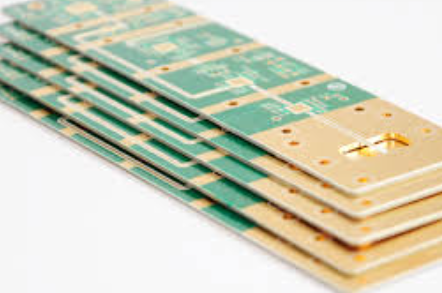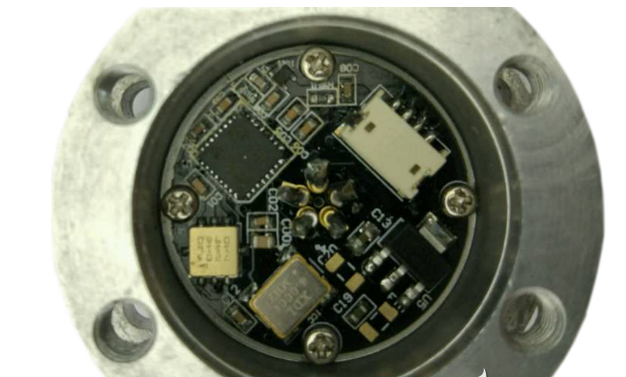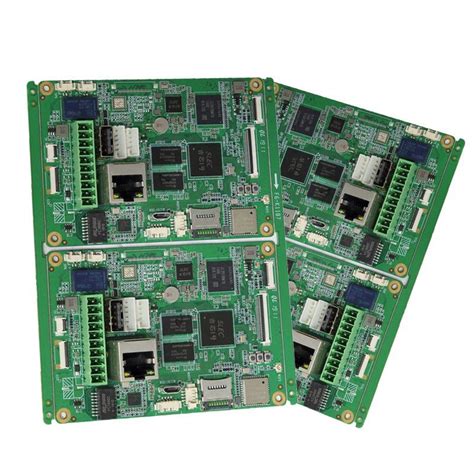High frequency rogers 4003c pcb
Benefits Of Using Rogers 4003C PCB In High-Frequency Applications
Rogers 4003C PCB is a highly regarded material in the realm of high-frequency applications, offering a multitude of benefits that make it a preferred choice among engineers and designers. One of the primary advantages of using Rogers 4003C PCB is its exceptional electrical performance. This material exhibits a low dielectric constant (Dk) and low dissipation factor (Df), which are crucial for maintaining signal integrity and minimizing signal loss in high-frequency circuits. Consequently, these properties ensure that the signals transmitted through the PCB remain clear and precise, which is essential for applications such as RF and microwave communications.
In addition to its superior electrical properties, Rogers 4003C PCB also boasts excellent thermal management capabilities.
The material’s low thermal coefficient of dielectric constant (TCDk) ensures that its electrical performance remains stable across a wide range of temperatures. This stability is particularly important in high-frequency applications where temperature fluctuations can significantly impact the performance of the circuit. By maintaining consistent electrical properties, Rogers 4003C PCB helps to ensure the reliability and longevity of the devices in which it is used.
Moreover, the mechanical properties of Rogers 4003C PCB contribute to its suitability for high-frequency applications.
The material is known for its dimensional stability, which means it maintains its shape and size even under varying environmental conditions. This characteristic is vital for the precise manufacturing processes required in high-frequency circuit design. Furthermore, Rogers 4003C PCB is compatible with standard FR-4 processing techniques, making it easier for manufacturers to integrate this material into their existing production lines without the need for significant modifications.
Another notable benefit of using Rogers 4003C PCB is its cost-effectiveness.
While high-performance materials often come with a hefty price tag, Rogers 4003C offers a balance between performance and affordability. This cost-efficiency makes it an attractive option for a wide range of high-frequency applications, from consumer electronics to advanced communication systems. By providing high-quality performance at a reasonable cost, Rogers 4003C PCB enables manufacturers to produce reliable and efficient devices without compromising on budget constraints.
Furthermore, the versatility of Rogers 4003C PCB cannot be overlooked.
This material is suitable for a diverse array of high-frequency applications, including antennas, power amplifiers, and radar systems. Its ability to perform consistently across different applications underscores its adaptability and reliability. This versatility allows engineers to use Rogers 4003C PCB in various designs, thereby streamlining the development process and reducing the need for multiple materials.
In conclusion, the benefits of using Rogers 4003C PCB in high-frequency applications are manifold. Its exceptional electrical performance, thermal management capabilities, mechanical stability, cost-effectiveness, and versatility make it an ideal choice for engineers and designers working on advanced electronic systems. By leveraging the advantages of Rogers 4003C PCB, manufacturers can ensure the development of high-quality, reliable, and efficient devices that meet the demanding requirements of modern high-frequency applications. As technology continues to advance, the importance of materials like Rogers 4003C PCB in achieving superior performance and reliability will only become more pronounced.
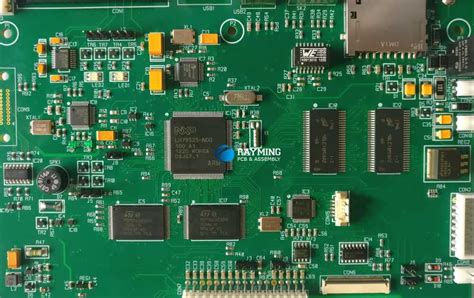
Design Considerations For High-Frequency Rogers 4003C PCB
When designing high-frequency printed circuit boards (PCBs) using Rogers 4003C material, several critical considerations must be taken into account to ensure optimal performance. Rogers 4003C is a popular choice for high-frequency applications due to its excellent electrical properties, including low dielectric constant and low loss tangent. These characteristics make it suitable for applications such as RF and microwave circuits, antennas, and high-speed digital circuits. However, to fully leverage these benefits, designers must carefully address various design aspects.
Firstly, the dielectric constant (Dk) of Rogers 4003C, which is approximately 3.38, plays a significant role in determining the impedance of transmission lines.
Accurate impedance control is crucial for minimizing signal reflections and ensuring signal integrity. To achieve this, designers must meticulously calculate the trace width and spacing, considering the substrate thickness and the Dk value. Utilizing impedance calculators or simulation tools can aid in achieving the desired impedance, typically 50 ohms for most high-frequency applications.
In addition to impedance control, the low loss tangent of Rogers 4003C, around 0.0027 at 10 GHz, helps in reducing signal attenuation.
However, to maintain low losses, it is essential to minimize the length of high-frequency traces and avoid sharp bends, which can cause signal degradation. Employing smooth, gradual curves and maintaining consistent trace widths can help in preserving signal integrity over longer distances.
Another critical consideration is the thermal management of the PCB.
High-frequency circuits often generate significant heat, which can affect the performance and reliability of the components. Rogers 4003C has a relatively low thermal conductivity compared to other materials, necessitating effective thermal management strategies. Designers should incorporate thermal vias, heat sinks, and adequate copper planes to dissipate heat efficiently. Additionally, ensuring proper airflow and ventilation within the enclosure can further aid in maintaining optimal operating temperatures.
The choice of surface finish is also vital in high-frequency PCB design.
Surface finishes such as Electroless Nickel Immersion Gold (ENIG) or immersion silver are preferred for their excellent conductivity and smooth surface, which are essential for high-frequency signal transmission. These finishes also provide good solderability and corrosion resistance, enhancing the overall reliability of the PCB.
Moreover, the layout of components and traces must be carefully planned to minimize electromagnetic interference (EMI) and crosstalk.
Placing high-frequency components away from noise-sensitive analog circuits and using ground planes to shield sensitive areas can significantly reduce EMI. Additionally, maintaining adequate spacing between high-frequency traces and employing differential signaling for critical signals can help in mitigating crosstalk.
Furthermore, the selection of appropriate connectors and vias is crucial for maintaining signal integrity.
High-frequency signals are particularly susceptible to losses and reflections at interconnects. Using high-quality connectors with low insertion loss and designing vias with controlled impedance can help in preserving signal quality. Blind and buried vias can be employed to reduce via stubs and minimize signal degradation.
Finally, thorough testing and validation are imperative to ensure the designed PCB meets the required performance standards. High-frequency PCBs should undergo rigorous testing, including signal integrity analysis, impedance measurements, and thermal cycling tests. These tests help in identifying potential issues and validating the design before mass production.
In conclusion, designing high-frequency PCBs using Rogers 4003C material requires careful consideration of various factors, including impedance control, thermal management, surface finish, EMI reduction, and interconnect quality. By addressing these aspects meticulously, designers can harness the superior electrical properties of Rogers 4003C to create high-performance, reliable PCBs for advanced applications.
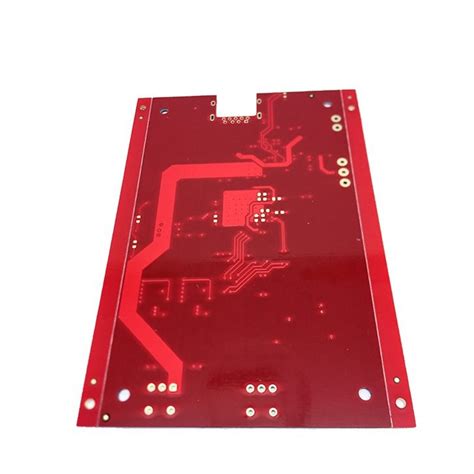
Comparing Rogers 4003C PCB With Other High-Frequency Materials
When comparing Rogers 4003C PCB with other high-frequency materials, it is essential to consider various factors such as dielectric constant, thermal management, and signal integrity. Rogers 4003C is a popular choice in the realm of high-frequency printed circuit boards (PCBs) due to its unique properties and performance characteristics. However, understanding how it stacks up against other materials can provide valuable insights for engineers and designers.
One of the primary attributes of Rogers 4003C is its dielectric constant (Dk), which is relatively stable over a wide frequency range.
This stability is crucial for maintaining signal integrity in high-frequency applications, such as RF and microwave circuits. In comparison, other materials like FR-4, a commonly used PCB substrate, exhibit a higher and less stable dielectric constant. This variability can lead to signal distortion and loss, making FR-4 less suitable for high-frequency applications.
Thermal management is another critical aspect to consider.
Rogers 4003C offers excellent thermal conductivity, which helps in dissipating heat efficiently. This property is particularly beneficial in high-power applications where excessive heat can degrade performance and reliability. On the other hand, materials like PTFE (Polytetrafluoroethylene) also provide good thermal management but often require more complex manufacturing processes, which can increase production costs and time.
Moreover, the loss tangent, or dissipation factor, of Rogers 4003C is relatively low.
This characteristic minimizes signal loss, ensuring that the transmitted signals remain strong and clear. In contrast, materials such as FR-4 have a higher loss tangent, which can result in significant signal attenuation, especially at higher frequencies. Consequently, Rogers 4003C is often preferred for applications where maintaining signal strength is paramount.
In terms of mechanical properties, Rogers 4003C exhibits excellent dimensional stability.
This stability ensures that the material does not undergo significant changes in size or shape under varying environmental conditions, such as temperature and humidity. Comparatively, materials like ceramic-filled PTFE can offer similar stability but may be more brittle, posing challenges during the manufacturing and handling processes.
Cost is another factor that cannot be overlooked.
While Rogers 4003C is generally more expensive than standard materials like FR-4, it is often more cost-effective than other high-performance substrates such as ceramic-filled PTFE. The balance between performance and cost makes Rogers 4003C an attractive option for many high-frequency applications.
Additionally, the ease of processing Rogers 4003C is a notable advantage.
It can be processed using standard PCB manufacturing techniques, which simplifies production and reduces lead times. In contrast, materials like PTFE often require specialized equipment and processes, adding complexity and cost to the manufacturing workflow.
Environmental considerations also play a role in material selection.
Rogers 4003C is known for its low outgassing properties, making it suitable for use in aerospace and other sensitive applications where contamination must be minimized. Other materials may not offer the same level of environmental stability, limiting their use in such critical applications.
In conclusion, while Rogers 4003C PCB offers a compelling combination of dielectric stability, thermal management, low loss tangent, and ease of processing, it is essential to weigh these benefits against the specific requirements of the application. By comparing it with other high-frequency materials, engineers and designers can make informed decisions that optimize performance, reliability, and cost-effectiveness.

Manufacturing Challenges And Solutions For Rogers 4003C PCB
The manufacturing of high-frequency Rogers 4003C PCBs presents a unique set of challenges that require specialized solutions to ensure optimal performance and reliability. Rogers 4003C is a high-frequency laminate material known for its excellent electrical properties, making it a preferred choice for applications such as RF and microwave circuits. However, the very characteristics that make Rogers 4003C desirable also contribute to the complexities involved in its manufacturing.
One of the primary challenges in manufacturing Rogers 4003C PCBs is the material’s sensitivity to temperature.
Unlike traditional FR-4 materials, Rogers 4003C has a lower coefficient of thermal expansion (CTE), which means it can be more susceptible to thermal stress during the soldering process. This necessitates precise control over the thermal profiles used during reflow soldering to prevent delamination or other thermal damage. Manufacturers often employ advanced thermal management techniques, such as pre-baking the laminate to remove moisture and using controlled ramp-up and cool-down rates during soldering, to mitigate these risks.
Another significant challenge is the material’s mechanical properties.
Rogers 4003C is relatively softer compared to FR-4, which can lead to difficulties in drilling and routing. The softer nature of the material can cause issues such as burr formation and tool wear, which can compromise the integrity of the PCB. To address this, manufacturers use specialized drilling techniques and tools designed for high-frequency laminates. For instance, using diamond-coated drill bits can reduce tool wear and improve hole quality, while optimizing drilling parameters such as speed and feed rate can minimize burr formation.
The dielectric properties of Rogers 4003C also pose challenges in terms of signal integrity.
The material’s low dielectric constant and low loss tangent are advantageous for high-frequency applications, but they require meticulous attention to detail during the design and manufacturing process. Ensuring consistent dielectric thickness and uniformity is crucial to maintaining signal integrity. Manufacturers often employ advanced imaging and inspection techniques, such as automated optical inspection (AOI) and X-ray inspection, to detect and correct any inconsistencies in the dielectric layer.
Furthermore, the adhesion of copper to Rogers 4003C can be problematic due to the material’s chemical composition.
Traditional copper-clad laminates rely on a strong bond between the copper and the substrate, but the unique properties of Rogers 4003C can make this bond less reliable. To enhance adhesion, manufacturers may use surface treatments such as plasma etching or chemical roughening to increase the surface area and improve the bond strength between the copper and the laminate. Additionally, employing high-quality adhesives and ensuring proper curing processes can further enhance the reliability of the copper adhesion.
In conclusion, the manufacturing of high-frequency Rogers 4003C PCBs involves navigating a series of challenges that stem from the material’s unique properties. By implementing specialized techniques and solutions, manufacturers can overcome these challenges and produce PCBs that meet the stringent requirements of high-frequency applications. From precise thermal management and advanced drilling techniques to meticulous attention to dielectric properties and enhanced copper adhesion, each step in the manufacturing process must be carefully controlled to ensure the final product’s performance and reliability. As technology continues to advance, ongoing research and development in manufacturing processes will likely yield even more refined solutions, further enhancing the capabilities of Rogers 4003C PCBs in high-frequency applications.

